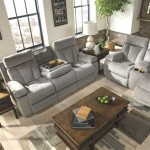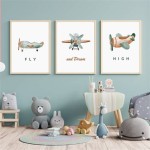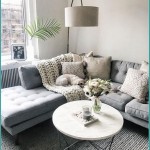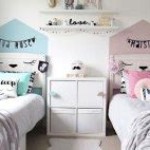How To Decorate a Toddler Bedroom
Decorating a toddler's bedroom presents a unique opportunity to create a stimulating, safe, and comforting space that fosters growth and imagination. This process requires careful consideration of several factors, from color palettes and furniture choices to safety measures and organizational solutions.
Choosing a Theme: Selecting a theme can provide a cohesive framework for the entire decorating process. Popular themes include animals, nature, transportation, and favorite storybook characters. However, a theme is not mandatory; a well-coordinated room can be equally appealing. When choosing a theme, consider the child's current interests, but avoid trends that might quickly fade. A more generalized theme, such as "ocean life" rather than a specific cartoon character, offers more longevity.
Color Palette: Color significantly impacts a child's mood and energy levels. Soft pastels create a calming and serene atmosphere conducive to sleep. Brighter colors can stimulate creativity and playfulness. A balanced approach often works best, incorporating both calming and stimulating colors. One strategy is to use softer colors for the walls and incorporate brighter hues in the bedding, rugs, and accessories. Consider the room's natural light when selecting colors; darker rooms may benefit from lighter shades.
Furniture Selection: Furniture should be both functional and age-appropriate. A toddler bed is a crucial element, offering a transition from a crib. Choose a sturdy, low-to-the-ground bed with safety rails. A small table and chairs provide a dedicated space for play and creative activities. Storage solutions are essential for maintaining an organized environment. Low shelves and bins allow toddlers to access their toys and books independently, promoting self-sufficiency. A comfortable armchair or rocker creates a comfortable space for story time.
Flooring Options: Flooring choices need to address both comfort and practicality. Hardwood or laminate flooring offers durability and easy cleaning, but area rugs are essential to soften the space and create designated play areas. Rugs should have a non-slip backing to prevent accidents. Carpeting provides a soft and warm surface, but requires more diligent cleaning. Consider low-pile carpeting for easier maintenance and allergen reduction.
Wall Decor: Walls offer a canvas for creative expression and learning. Wall decals are a popular and readily changeable option for adding visual interest. Framed artwork, including the child's own creations, personalizes the space. Chalkboard paint creates an interactive wall surface where children can draw and express themselves freely. Consider hanging a growth chart to track the child's development. Keep decorations at a safe height and avoid hanging heavy items above the bed.
Lighting Considerations: Proper lighting is crucial for safety and functionality. A dimmable overhead light allows for adjusting the brightness based on the time of day and activity. A nightlight provides a sense of security during the night. Task lighting, such as a desk lamp, is beneficial for reading and creative activities. Consider incorporating playful lighting elements, such as string lights or projection lamps, to add a touch of whimsy.
Safety Measures: Childproofing is paramount in a toddler's bedroom. Cover electrical outlets with safety plugs and secure any loose cords. Anchor furniture to the walls to prevent tipping hazards. Install window guards to prevent falls. Ensure blinds and curtains do not have long cords that pose a strangulation risk. Regularly inspect the room for any potential hazards.
Organization and Storage: Maintaining an organized space can contribute significantly to a peaceful environment. Utilize a variety of storage solutions, such as bins, baskets, and drawers, to keep toys, books, and clothing organized. Labeling storage containers with pictures or words can help toddlers learn to put items away independently. Rotate toys periodically to keep the space fresh and engaging, and to minimize clutter.
Textiles and Soft Furnishings: Incorporating a variety of textures adds warmth and comfort. Soft bedding, including sheets, blankets, and pillows, should be made of breathable, hypoallergenic materials. Curtains or drapes add privacy and control light levels. Cushions and throws provide additional comfort and opportunities for imaginative play. Choose machine-washable fabrics for easy cleaning.
Personal Touches: Adding personal touches makes the space truly special. Displaying cherished photos, incorporating handmade items, or showcasing the child's artwork creates a sense of belonging and individuality. Involve the toddler in the decorating process, if possible, by allowing them to choose some of the decorations or colors. This fosters a sense of ownership and pride in their space.

How To Decorate A Toddler S Bedroom I Take You Wedding Readings Ideas Dresses Theme
:max_bytes(150000):strip_icc()/SimpleNordicNursery-ea8177d4262342b5a56c6bd416248be8.jpg?strip=all)
8 Tips For Designing Better Kids Rooms
:strip_icc()/CalimiaHome_KellyBoyd-055e952e4d1b4bebb47f7b9ac46bde85.jpeg?strip=all)
20 Toddler Room Ideas That Are Super Stylish

How Do You Layout A Toddler Bedroom I Take Wedding Readings Ideas Dresses Theme

How To Decorate A Toddler S Bedroom I Take You Wedding Readings Ideas Dresses Theme
:max_bytes(150000):strip_icc()/monochromeboyroom-e786aa7542784ced8264d3dfa74af947.jpeg?strip=all)
8 Tips For Designing Better Kids Rooms

25 Toddler Room Ideas Tips Tricks Pottery Barn Kids

Toddler Bedroom Decor 6 Genius Ideas To Replicate

Pin On Idee Deco

Toddler Bedroom Decor 6 Genius Ideas To Replicate







